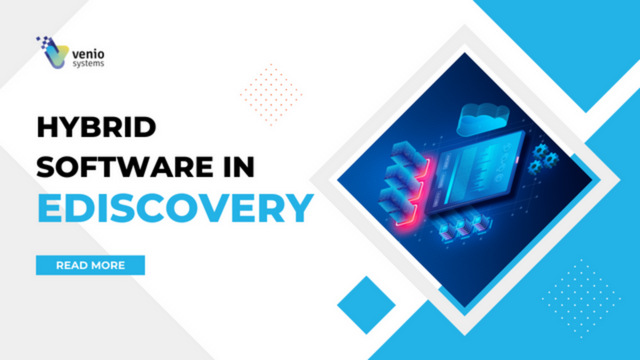
[Editor’s Note: EDRM is proud to amplify the educational offerings of our Trusted Partners.]
In today’s world, it is nearly impossible to avoid the eDiscovery process. The growth of electronic data storage and availability has made compliance with regulations inevitable for any business or legal operation especially when faced with a dispute or a request for information.
A hybrid solution will offer the flexibility of a cloud-based solution with the security of on-premise software — it’s truly a win-win.
Team Venio
To ensure that the eDiscovery process is efficient and accurate, the right software is critical. It has to be powerful enough to sift through vast amounts of electronically stored information (ESI) while also addressing different needs that may arise such as document management, searching, and reviewing. It has to be able to handle data coming from both on-premise and cloud-based sources — and do so securely. It also needs to be able to integrate with other systems in order for users to easily visualize trends and facilitate data output. A hybrid solution will offer the flexibility of a cloud-based solution with the security of on-premise software — it’s truly a win-win.
This blog will take you through a comparison of both traditional systems and reasons why a hybrid option may be the ideal solution.
On-premise eDiscovery Software
On-premise eDiscovery software is installed entirely at a company’s physical location, which means the organization’s IT team is responsible not only for the software but also all of the supporting hardware, system security, maintenance, and upgrades. This approach keeps data in-house and secure by limiting access to a company’s network from third-party vendors and networks.
On-premise eDiscovery software is a great solution for organizations that seek full control over the eDiscovery process and all of its related technology. It is a good solution when dealing with stringent security regulations pertaining to how ESI is handled.
However, there are some drawbacks to this type of software, beginning with cost. An on-premise system requires regular hardware and software maintenance, meaning it also needs in-house staff to monitor the system and keep it running properly. It may also require bolstered security measures to protect data. These added costs can be prohibitive for small businesses without the capital to invest upfront.
Another drawback is finite storage space. Since on-premise software must be installed on an organization’s existing servers or at its own physical location, storage availability may be limited. Making space on servers or buying additional storage can mean added costs, but would likely be necessary for an on-premise solution, especially if the organization grows quickly or accumulates more data over time.

